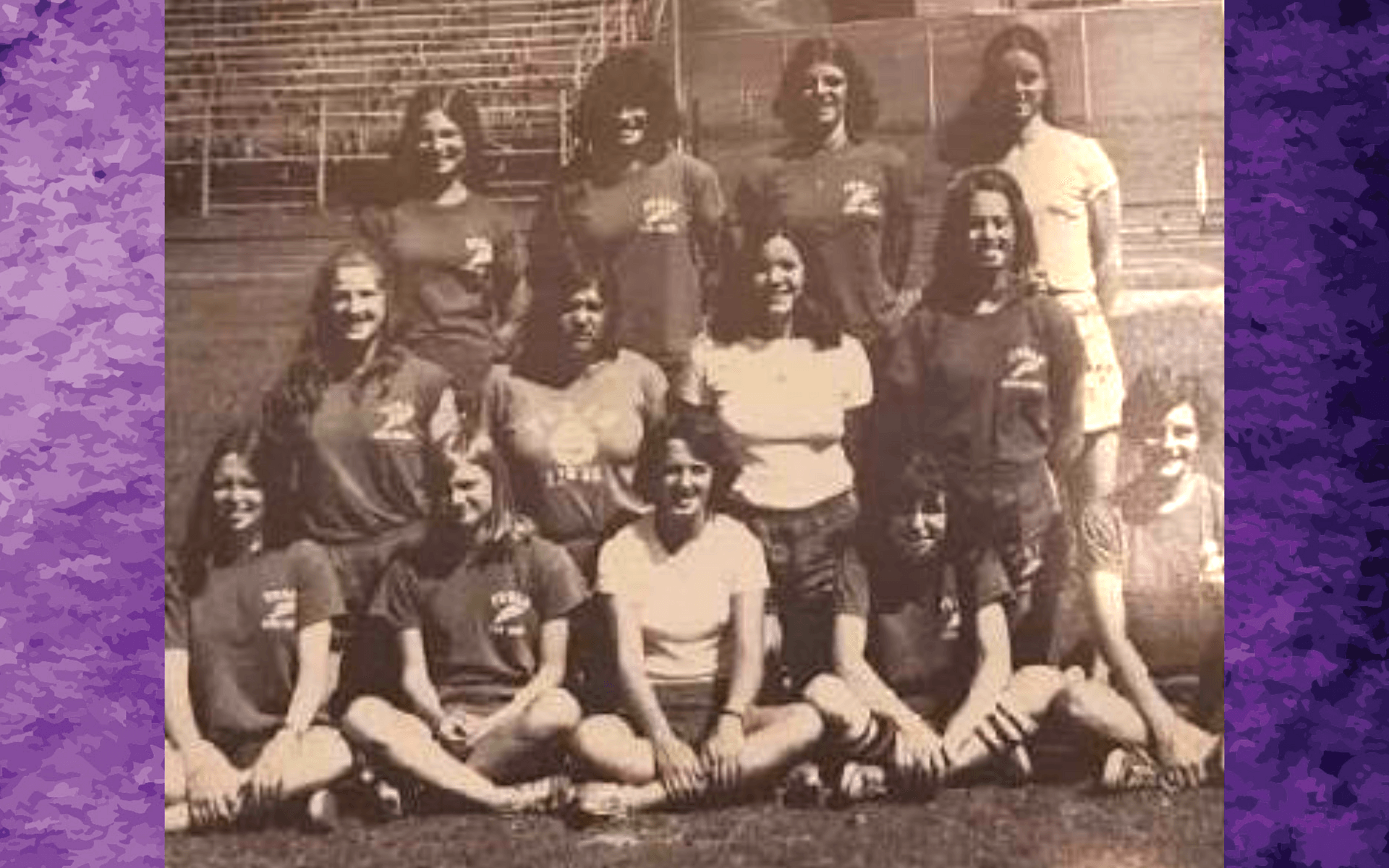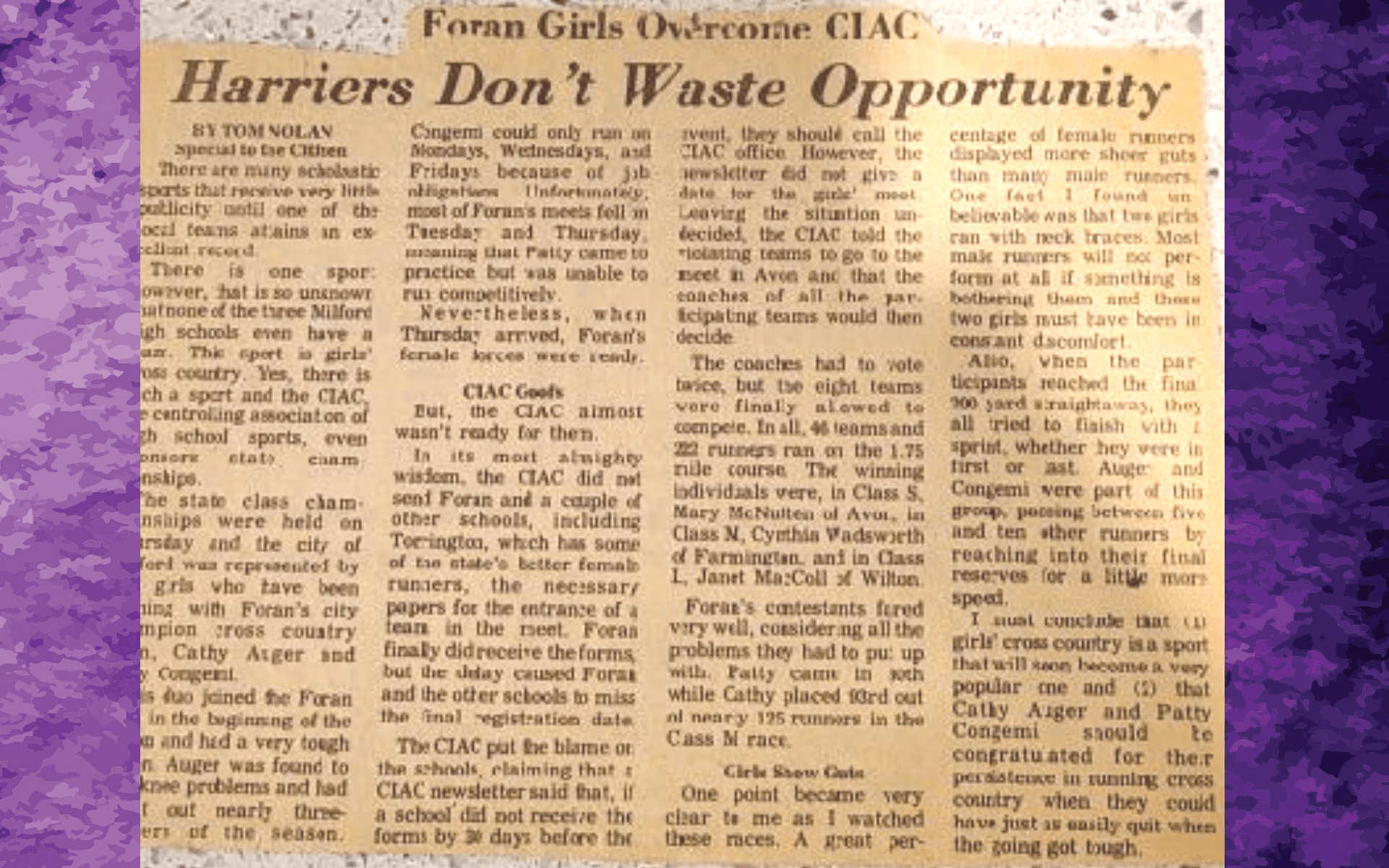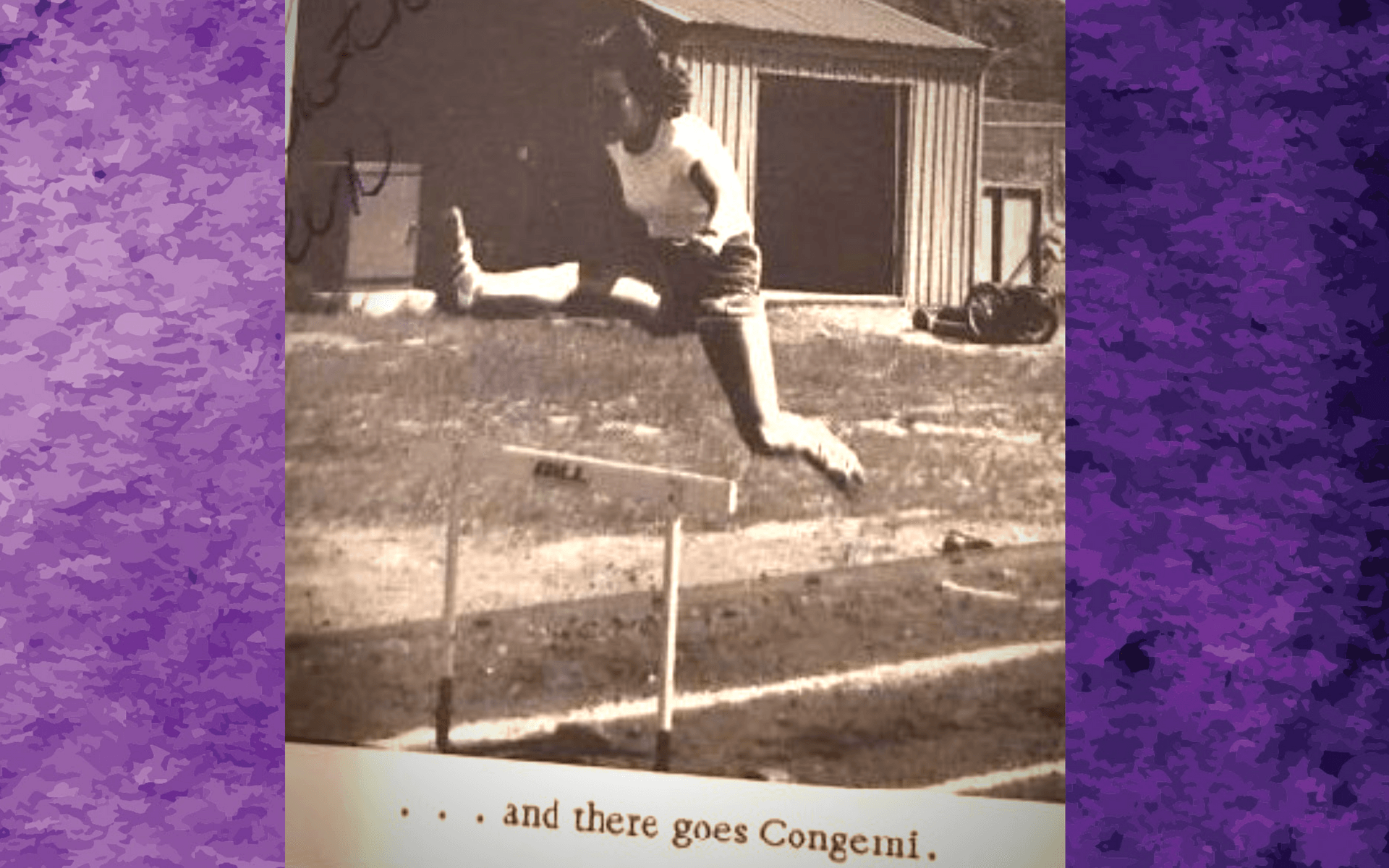Insights
49 Years of Title IX: From Equity in Women’s Sports to Transgender Rights to My Feminist-Athlete Mom
Written by Kelsy Doheny on Jun 28, 2021
Related content: Diversity And Inclusion

EDITOR’S NOTE: Faculty Relationship Manager Kelsy Doheny shares her personal perspective on The Latest as an active member of three of 2U’s employee-led Business Resource Networks (BRNs): the Womxn’s Alliance Network (W.A.N.), the Asian Pacific Islander Network (APIN), and 2Q, the BRN for LGBTQIA+ employees and allies.
Forty-nine years ago this month, on June 23, 1972, Title IX was passed as part of a series of Federal Education Amendments that extended civil rights protections to the higher education community. Nestled between the rise of feminist activism in the 1960s and the failure of the ERA in the late 1970s, this landmark legislation was a pivotal achievement in the Women’s Movement. Many Americans may associate Title IX with women’s athletics, but that is only one piece of a much bigger puzzle, of which various aspects continue to be debated today.
The Impact of Title IX on Access, Inclusion, and Reporting
The Impact of Title IX on Access, Inclusion, and Reporting
The purpose of Title IX was to prohibit discrimination on the basis of sex from any educational institution that receives federal funding. The U.S. Department of Education (DOE) states that Title IX protections extend to “recruitment, admissions, and counseling; financial assistance; athletics; sex-based harassment, which encompasses sexual assault and other forms of sexual violence; treatment of pregnant and parenting students; treatment of LGBTQ+ students; discipline; single-sex education; and employment.” As 2U supports higher education and works with university partners who receive federal funding from the U.S. government, this legislation impacts our company in several ways.
2U is knocking down barriers to access. The company’s dedication to diversity, equity, and inclusion is what gets me up in the morning—and why so many leading and innovative universities choose to partner with us.— Kelsy Doheny, Faculty Relationship Manager, 2U
1. Access to Education
The legislation’s original intent was to rectify inequalities that inhibited women’s admission to higher education institutions, excluded them from “traditionally male” majors and extracurriculars, and enabled the sexist treatment of female faculty. For example, Title IX made it illegal to extend different admissions requirements to female students vs. male students. As of 1972, female students are legally allowed to declare any major or apply to any program they are academically qualified for; they’re also legally afforded equitable extracurricular activities. Female faculty are evaluated for tenure on the same basis as their male colleagues and no longer barred from faculty organizations. And there is now a more transparent reporting process for holding higher education institutions accountable for adherence to Title IX.
2. LGBTQIA+ Inclusion
For many years, the legal community has debated whether discrimination on the basis of sex extends to sexual orientation and gender identity, i.e. lesbian, gay, bisexual, and transgender individuals. In 2010, for example, the DOE issued guidance for schools to “treat a student’s gender identity as the student’s sex for purposes of Title IX and its implementing regulations. This means that a school must not treat a transgender student differently from the way it treats other students of the same gender identity.” In 2017, the DOE suggested decisions on educational policy should be left to individual states and local school districts. And just last week, the DOE issued a notice of interpretation, saying that, “The Department makes clear that all students—including LGBTQ+ students—deserve the opportunity to learn and thrive in schools that are free from discrimination.” This means schools must examine and reform their housing policies, athletics participation regulations, locker room and bathroom access, and name/pronoun usage in order to comply.
3. Sexual Harassment and Assault
Under Title IX, sexual harassment and assault are considered part of sex discrimination, but this aspect of the legislation has also been revised over the years. One of the arguments in question is whether schools are required to only respond to reports of misconduct—or if they must also take measurable steps to prevent it. Last year’s addition of the “Final Rule” denotes that schools are required to take quick and decisive action in response to reports of sexual harassment or assault. However, the rights and protections afforded to victims vs. the accused continue to be debated.

My Mom, the Progressive and Persistent Feminist Athlete
My Mom, the Progressive and Persistent Feminist Athlete
As a college-educated woman whose women’s swimming team would not exist without Title IX, I credit the law with the experiences I have been blessed with, as well as the passion for education it has instilled in me. In the anniversary month of the legislation’s passing, I’m humbled by the courage of all the women who came before me, enabling me to compete in college sports. Still, as a female coach, I remember being the recipient of countless microaggressions from male coaches and being regularly dismissed among a sea of male voices. (I think it’s worth noting, however, that my team beat theirs!)
But what I most admire are the grassroots efforts of my own feminist-athlete mom Patty Congemi, who paved the way for the girls’ running teams at her alma mater and set an invaluable example for me. As a freshman at Connecticut’s Milford High School in the early 1970s, my mother initially joined the boys’ track and field team—because that was her only choice. Back then, sports that didn’t “bring in the money” were barely on the table for boys, let alone for girls. But my young and spunky mom decided to do something about it when she was redistricted her sophomore year.

At my mom’s new school, she tried to get on the boys’ team there, to no avail. Most everyone else in the small community supported her efforts, including the boys, just not the school itself. A woman on the school board eventually urged my mom to go to the local press, which she did. Every day thereafter, she went to the athletic director’s office asking about the budget for a girls’ track team, which the school board finally voted to provide—only once the article was published.
My mom’s scrappiness and persistence clearly paid off. But even once the girls’ team was established, the fight to compete continued when the CIAC, the school sports governing body, claimed that they did not receive the necessary paperwork to register the team for the state championship. The girls went anyway, and all of the other competing teams’ coaches voted to allow them to play.
“I just thought all of it was the right thing to do and fight for,” my mom recently told me. “I knew the girls’ team would prove itself and there would always be interest after that. For some girls, it was their first team experience and an opportunity to be included in something. Thirty years later, I went on to coach that same athletic director’s granddaughter in track, so everything came full circle.”

Continuing to Fight for Fundamental Rights—for All
Continuing to Fight for Fundamental Rights—for All
My mom’s words and memories make me grateful to work at 2U. By embracing the notion that high-quality education can exist in an online environment, we are actively making lifelong learning more equitable. In a time when childcare responsibilities and family care still prevent many women from being able to achieve their professional goals (the pandemic has certainly exacerbated this), 2U is knocking down barriers to access that have held back women, LGBTQIA+ individuals, and many others from pursuing education in the past. The company’s dedication to diversity, equity, and inclusion is what gets me up in the morning—and why so many leading and innovative universities choose to partner with us.

Last week, for the day-of anniversary of Title IX, I hosted a W.A.N., APIN, and 2Q-sponsored Zoom discussion for my fellow 2Utes with Nastia Gorodilova (they/them/theirs), a passionate scholar and advocate for this continuously debated and fine-tuned legislation, which they reminded all of us is only 37 words long. Our talk was so inspiring to me (Nastia has a Title IX tattoo!) that I’ve set several grassroots goals for myself to help Title IX be as inclusive as possible:
- Continue to educate myself on organizations like the student-run Know Your IX as well as the National Women’s Law Center, which both work to build more awareness and seek more clarity around the law.
- Advocate for stricter compliance enforcement and clearer guidelines at my local elementary, middle, and high schools—because Title IX extends to primary and secondary education, too.
- Vote in my local elections where bills seeking to clarify Title IX rights are on the table.
- And lastly, take a few moments to take stock of the organizations, people, and causes I follow and interact with on social media, to make sure they reflect my belief in the fundamental right for people to be safe, accepted, and offered equitable learning and extracurricular opportunities in education, regardless of gender or gender identity.

Title IX is susceptible to change, for better or worse. The law is not something we can check off as an accomplishment from a time when gender disparity was a thing. The fight is not over.